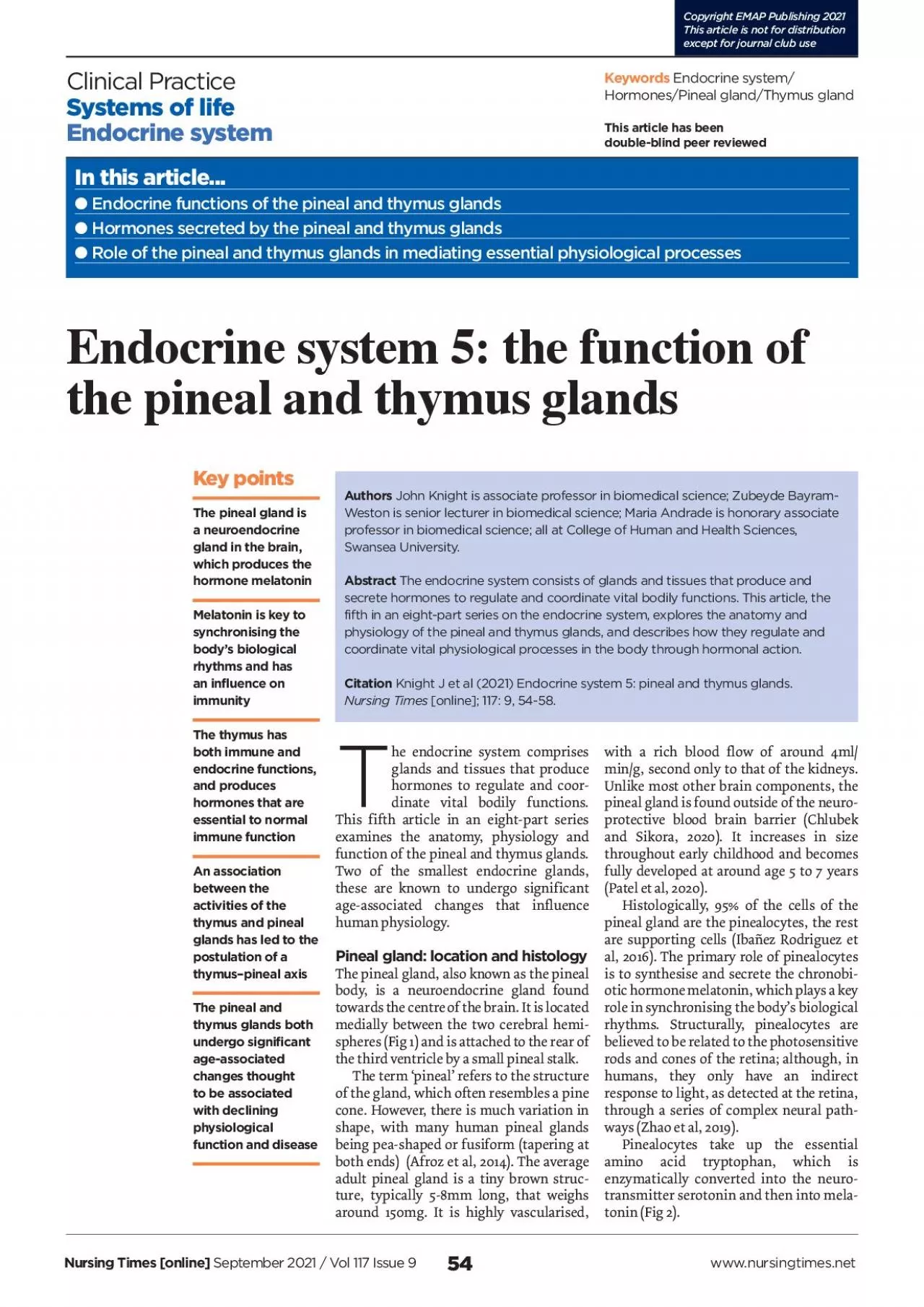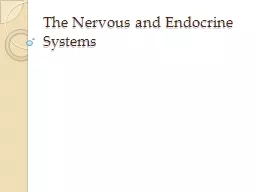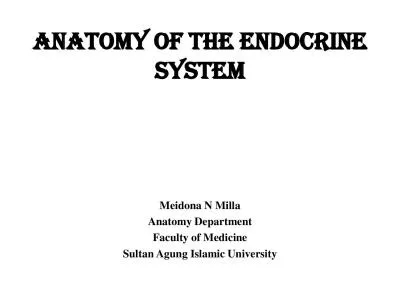PDF-he endocrine system comprises glands and tissues that produce hormones
Author : bety | Published Date : 2022-10-11
54 Key points The pineal gland is a neuroendocrine gland in the brain which produces the hormone melatoninMelatonin is key to synchronising the body146s biological
Presentation Embed Code
Download Presentation
Download Presentation The PPT/PDF document "he endocrine system comprises glands and..." is the property of its rightful owner. Permission is granted to download and print the materials on this website for personal, non-commercial use only, and to display it on your personal computer provided you do not modify the materials and that you retain all copyright notices contained in the materials. By downloading content from our website, you accept the terms of this agreement.
he endocrine system comprises glands and tissues that produce hormones: Transcript
Download Rules Of Document
"he endocrine system comprises glands and tissues that produce hormones"The content belongs to its owner. You may download and print it for personal use, without modification, and keep all copyright notices. By downloading, you agree to these terms.
Related Documents














